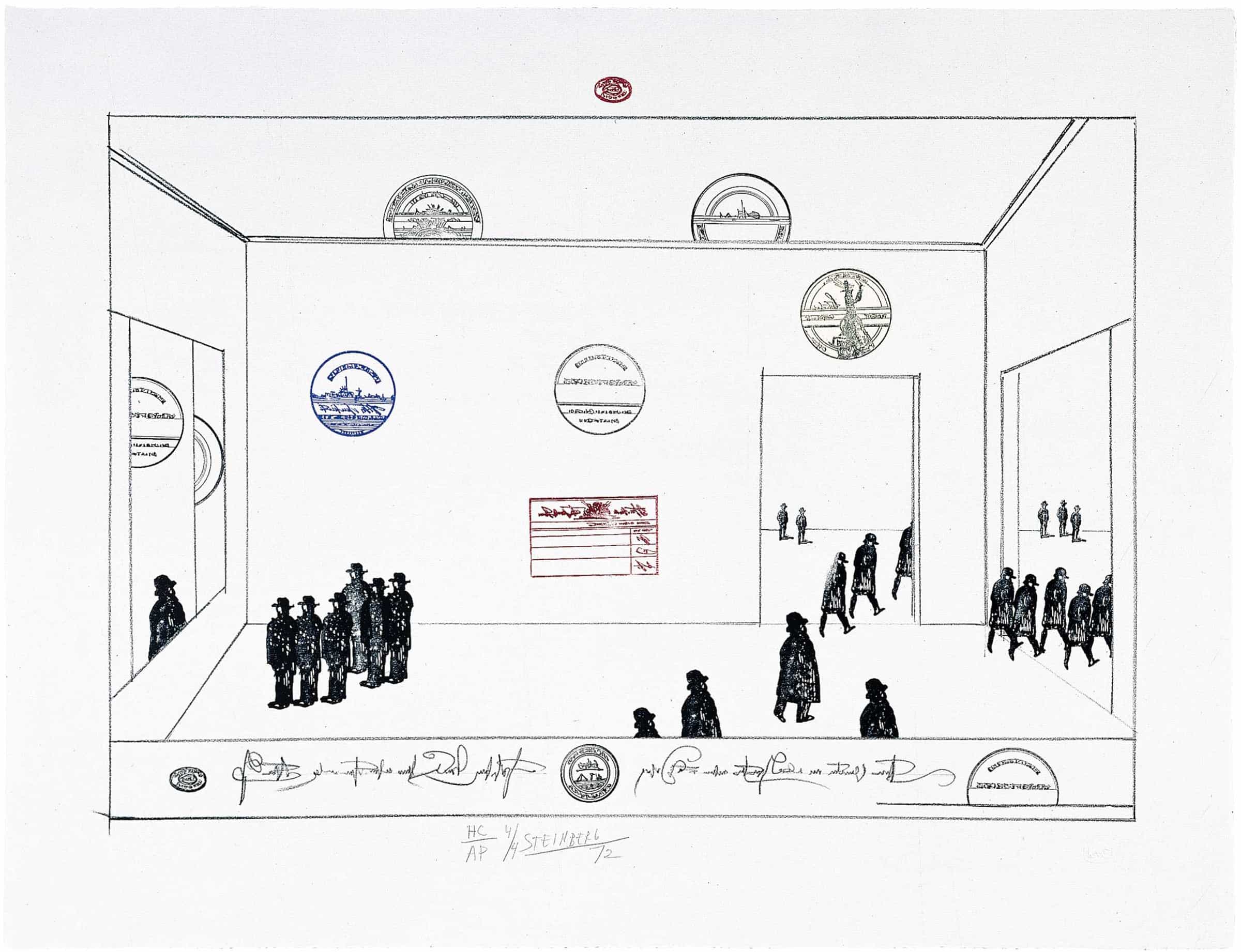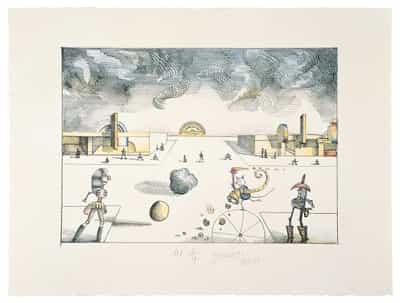About the Artist
Born in Romania, Saul Steinberg (1914-1999) studied philosophy at the University of Bucharest and architecture at the Polytechnic Institute in Milan. There he contributed cartoons for the magazine Bertoldo. Soon after his immigration to New York in 1941, he had drawings published in a number of prestigious magazines, including The New Yorker and PM. His art, which still appears in The New Yorker, has been favorably compared with political satirists such as William Hogarth, Honoré Daumier, and Henri Toulouse-Lautrec.
Steinberg had his first one-person exhibition at New York’s Wakefield Gallery (1943), and was included in the Museum of Modern Art’s Fourteen Americans (1946) and the Whitney Museum of American Art’s Annual Exhibition (1949). In 1978, the Whitney organized a traveling retrospective of the artist’s paintings, drawings, sculptures, and prints.
Tatyana Grosman invited Steinberg to print at ULAE in 1972. His first lithographs, The Museum, 1972, and Main Street, 1972-1973, place whimsical characters against bleak backgrounds or in bureaucratic offices. Steinberg’s penchant for stamped imagery, which he often incorporated in his drawings, is also present in these lithographs. In The Museum embossed images replace framed works of art; in Main Street the embossing becomes an iconic substitute for the rising sun.

